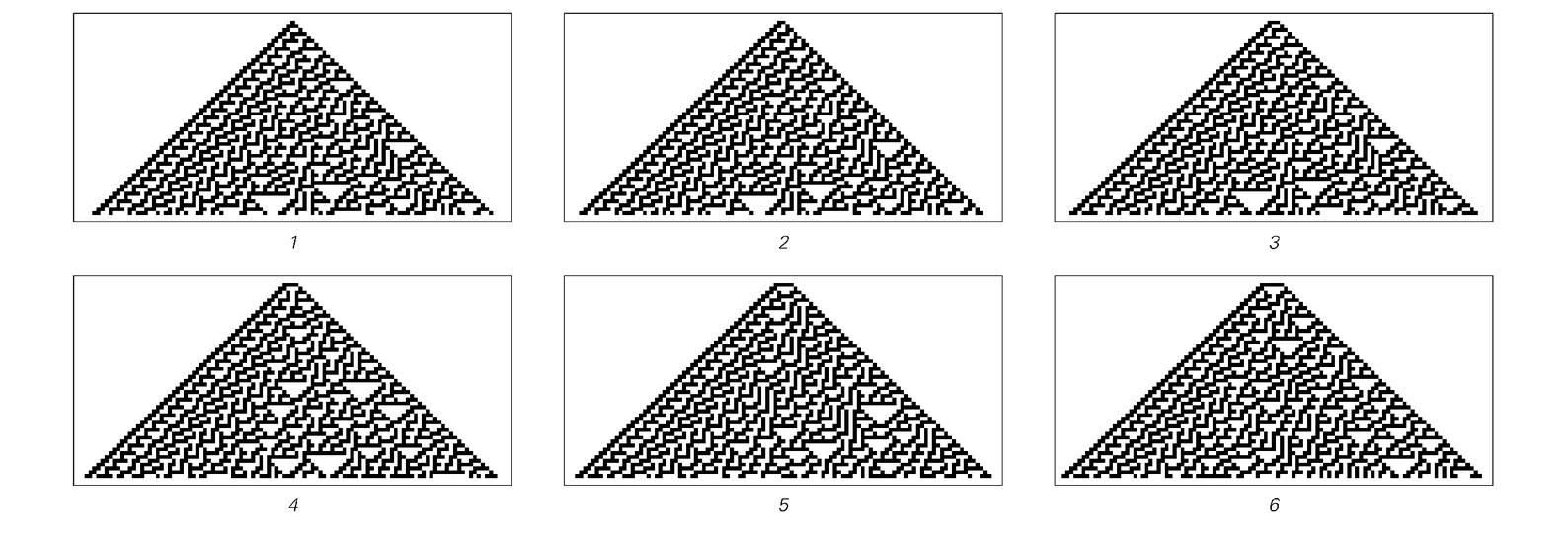investigate what happens if at every step one randomly perturbs the gray level of each cell by a small amount.
The pictures on the facing page show results for perturbations of various sizes. What one sees is that when the perturbations are sufficiently large, the sequence of colors of the center cell does indeed change. But the crucial point is that for perturbations below a certain critical size, the sequence always remains essentially unchanged.
Even though small perturbations are continually being made, the evolution of the system causes these perturbations to be damped out, and produces behavior that is in practice indistinguishable from what would be seen if there were no perturbations.
The question of what size of perturbations can be tolerated without significant effect depends on the details of the underlying rules. And as the pictures suggest, rules which yield more complex behavior tend to be able to tolerate only smaller sizes of perturbations. But the crucial point is that even when the behavior involves intrinsic randomness generation, perturbations of at least some size can still be tolerated.
And the reason this is important is that in any real experiment, there are inevitably perturbations on the system one is looking at.
With more care in setting up the experiment, a higher degree of isolation from the environment can usually be achieved. But it is never possible to eliminate absolutely all interaction with the environment.

The effect of changing the number of initial black cells in the rule 30 cellular automaton shown above. With only 2 or 3 black cells, the sequence in the center of the pattern does not change. But as soon as more black cells are added, it does change.